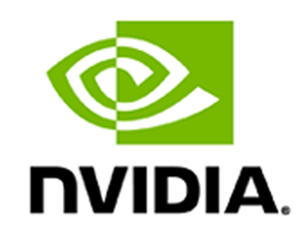Artificial intelligence adoption is increasing in higher education for both academic and research purposes. Too often, though, universities lack the IT infrastructure needed to sustainably power these systems.
“To do AI at scale, you need data, but you also need compute power, networking, storage and software,” says Cheryl Martin, director of global business development for higher education and research at NVIDIA. “Universities need a platform to bring all those things together.”
Modern AI requires purpose-built infrastructure that can handle its massively parallel computational demands. NVIDIA’s DGX platform addresses this by providing not only robust compute, but also the tools IT departments need to optimize the entire AI ecosystem.
A DEEPER LOOK: See how NVIDIA is fueling the next era of accelerated computing.
The AI Landscape in Higher Ed
The rapidly changing landscape of artificial intelligence is putting pressure on universities to invest in more powerful and versatile IT infrastructure.
“We’re seeing AI now not just in the computer science department, but across the university,” Martin says. “Beyond the chemistry and physics departments, AI supports linguistics with natural language processing. Art History departments are leveraging computer vision. It's being used in almost every single department now.”
Meanwhile, efforts to promote AI literacy in K–12 schools are on the rise. The next generation of students — the children of millennials — will be using AI technologies in almost every aspect of their lives. This generation will likely judge prospective colleges, in part, by their ability to provide powerful AI-enabled learning experiences. Higher education leaders will need to consider this when attracting and retaining this cohort, also known as “Generation AI.”
Whether students have knowledge of AI or not will soon impact how well they fare in the job market, as AI careers become lucrative even in industries outside of tech. “This is about workforce readiness,” Martin says. “Students need to get jobs when they graduate, and universities need to equip them with the right tools and the right experiences to meet that demand.”
This means higher education must start strategically planning for the infrastructure they need to support effective AI tools in curriculum and research.
LEARN MORE: Explore NVIDIA’s Higher Education and Research Conference sessions.
The Benefits of a Platform Approach to Designing AI Infrastructure
More often than not, piecemeal solutions tucked away in labs that cobble together heterogeneous IT components to create an AI ecosystem yield subpar results. It’s also an incredibly labor-intensive mission for higher education IT departments that are already understaffed.
To deliver AI infrastructure at scale, “they need a specialized solution,” Martin says. “When you look at natural language processing, for example, that’s not a linear increase in demand on the IT infrastructure, it’s an exponential increase. It involves a huge amount of data, and it can take weeks just to train one model.”
Traditional IT infrastructure approaches suited to conventional data center workloads are not optimized for the unique demands of AI and deep learning. Modern AI requires purpose-built infrastructure that can handle its massively parallel computational demands with accelerated computing architectures that leverage GPUs. In addition to computational power, IT teams and developers need full stack platforms, including optimized software that streamlines development while ensuring IT manageability.
This platform approach will ultimately help students achieve career readiness while also supporting the increasingly complex demands of university researchers.
What Is the NVIDIA DGX System?
What does the NVIDIA DGX solution offer, exactly?
DGX is an integrated AI computing platform. It is purpose-built to tackle the most demanding AI workloads. It comes with optimized AI software, access to NVIDIA’s AI-fluent practitioners and enterprise-grade support that significantly simplifies deployment and ongoing operations.
“It’s a full-stack AI appliance solution that’s design-optimized for maximum performance, supporting the lifecycle of AI development,” Martin says.
Since AI requires enormous amounts of data, universities and colleges need effective networking to make the best use of the compute power that supports AI efforts. DGX combines AI-enabled networking hardware and software to deliver low latency and high-speed performance.
The DGX approach also offers the scalability universities need to take advantage of AI in more use cases. They can start small with a single DGX system and segment that out to multiple simultaneous users or user groups. When it’s time to scale to more complex models, a school can interconnect multiple DGX units with NVIDIA networking to create a more comprehensive solution.
Some of the key benefits to this approach include:
- Data center performance with increased operational efficiencies: When universities leverage existing data centers to support AI, they have to dramatically increase the workload of hard-pressed IT teams. “DGX eases that burden. It enables them to get up and running considerably faster,” Martin says. “It’s also far easier for IT to support that single solution moving forward, versus trying to support an inventory of partial fixes.”
- Bigger models and faster insights: DGX minimizes the manual interventions needed to deploy and support AI. Because teams can deploy their models faster, it democratizes AI use across the university landscape. Students and researchers can derive value from AI algorithms even sooner. And as a preconfigured and preoptimized solution, DGX makes it possible to deliver bigger and better models.
- AI supercomputing for data science teams: With a platform approach that optimizes the key components of an AI ecosystem, educators and researchers can leverage DGX to scale their AI efforts to support increasingly complex and ever-expanding use cases. To handle massive amounts of data, the DGX A100 uses AMD's latest EPYC server processors, which provide 64 cores and 128 lanes of PCIe 4 interconnectivity. And by ensuring that compute, network, storage and software are all in alignment, DGX empowers users to experiment with more robust AI implementations.
“DGX effectively gives data science teams an AI supercomputing capability,” Martin says. “By making it easier to deploy and use AI in an academic setting, we’re creating the opportunity to do so much more with this capability.”
With DGX, it’s easy to get AI up and running quickly. And a platform approach ensures universities will have the flexibility and scalability they need to meet demand.
MORE ON EDTECH: Georgia Tech researcher discusses how AI can improve student success.
The First Steps to Designing an AI System
For universities looking to take advantage of AI, the first step is to start with an assessment of demand.
“You want to look at what the university’s needs are around AI,” Martin says. “Then you can look for a starting point. It can even be a single department, an isolated use case.”
From there, it’s not hard to build up to support multiple potential users. This could be done by pooling resources to build out a DGX deployment that supports wide-ranging AI implementations.
“When you look around, you’ll find that nearly every department is doing this to some degree. Whether it’s for teaching or research, there is a lot of AI activity already going on,” Martin says. A careful assessment at the start helps universities maximize the value of infrastructure investments and allows them to leverage the power of an AI-optimized platform to support multiple potential user groups.
Overall, many universities could benefit from starting their AI infrastructure investments today. Artificial intelligence provides a competitive differentiation, driving enrollment and preparing students for the job markets of the future. And a platform approach empowers higher education institutions to deliver on their promise to students, educators and researchers.
Brought to you by:













